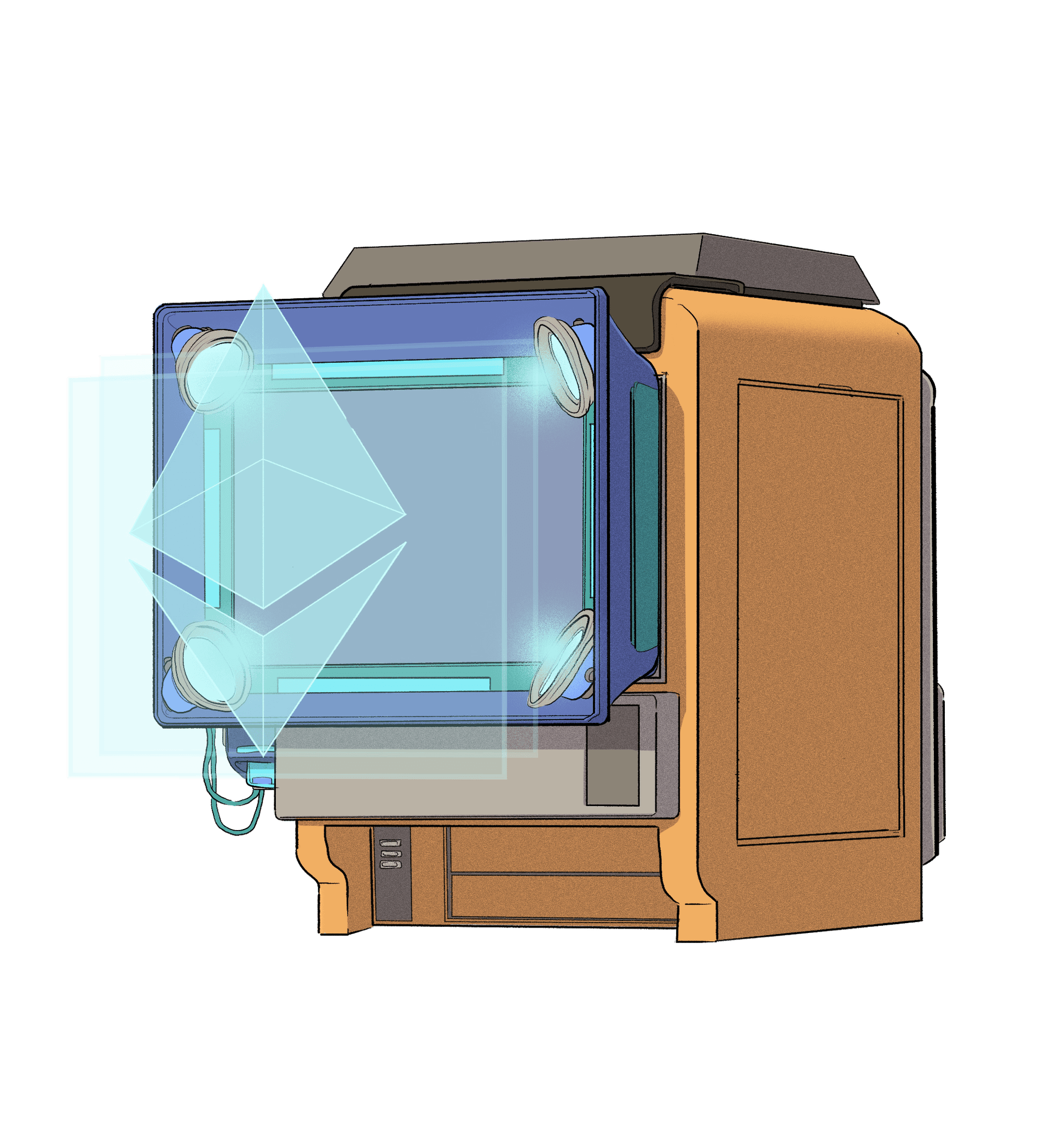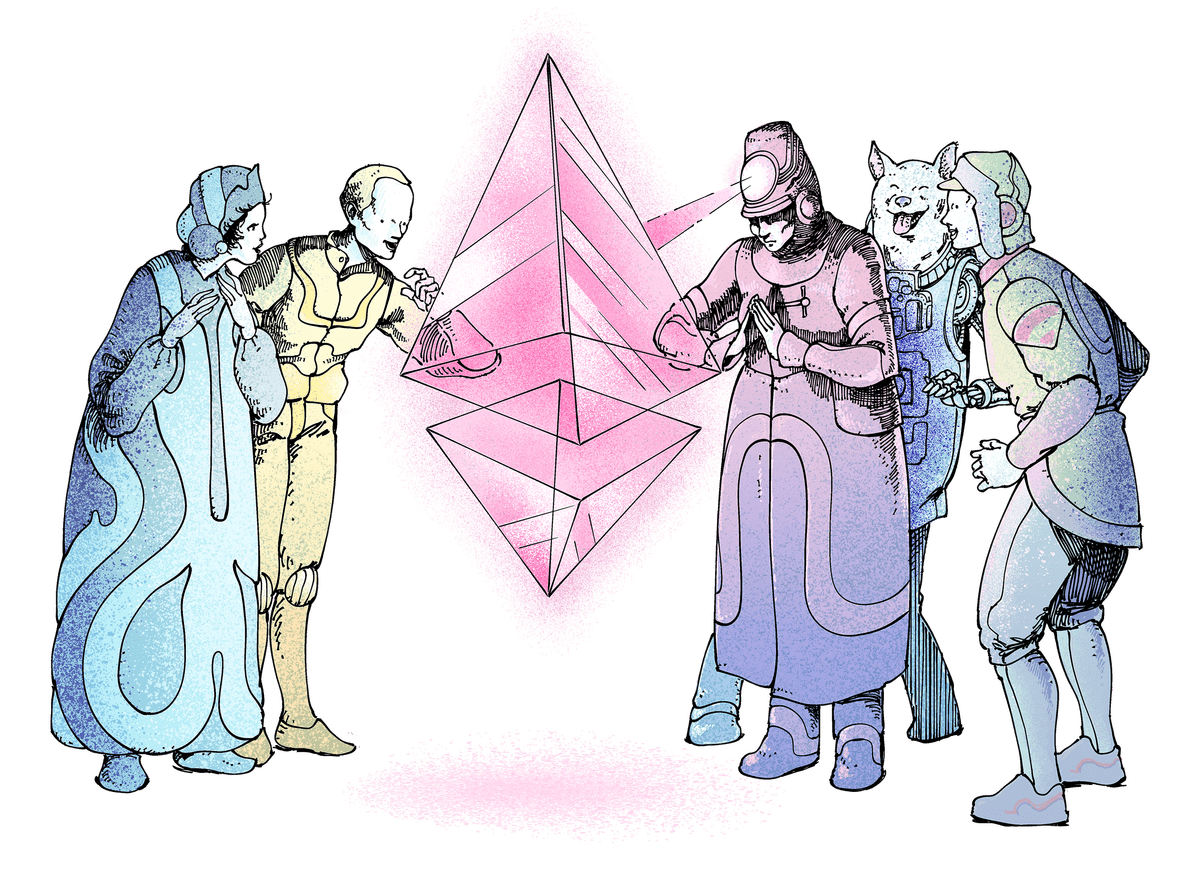Naknade za gorivo
Naknade mreže
Naknade mreže na Ethereumu se nazivaju gorivo.
Gorivo pokreće Ethereum.

Sažetak
- Svaka transakcija na Ethereumu zahtijeva malu naknadu za obradu
- Ove naknade su poznate kao naknade za „gorivo”
- Naknade za gorivo nisu fiksne, mijenjaju se ovisno o zagušenosti mreže
Šta su naknade za gorivo?
Zamislite Ethereum kao veliku računalnu mrežu u kojoj ljudi mogu obavljati zadatke poput slanja poruka ili pokretanja programa. Baš kao i u stvarnom svijetu, ovi zadaci zahtijevaju energiju za izvršavanje.
Na Ethereumu svaka računska radnja ima određenu cijenu za „gorivo”. Vaše naknade za gorivo predstavljaju ukupan trošak radnji u vašoj transakciji. Kada pošaljete transakciju ili pokrenete , plaćate naknade u vidu goriva kako biste ju obradili.

Kako da platim manje goriva?
Iako su veće naknade na Ethereumu ponekad neizbježne, postoje strategije koje možete koristiti da smanjite trošak:
Tempirajte svoje transakcije
Baš kao što je putovanje izvan glavne sezone ima manje gužve i povoljnije, korištenje Ethereuma je generalno jeftinije za korištenje kada Sjeverna Amerika spava.
Pričekajte da cijena goriva padne
Cijene goriva rastu i padaju svakih dvanaest sekundi ovisno o zagušenju Ethereumove mreže. Kada su cijene goriva visoke, čekanje od samo nekoliko minuta prije izvršenja transakcije moglo bi značajno smanjiti iznos koji plaćate.
Koristite Nivo 2
Lanci Nivoa 2 izgrađeni su na Ethereumu, nude niže naknade i obrađuju više transakcija. Oni su dobar izbor za uštedu na naknadama za transakcije koje se ne moraju dogoditi na glavnoj Ethereumovoj mreži.
Što uzrokuje visoke naknade za gorivo?
Kad god količina računske snage (gorivo) na Ethereumovoj mreži prijeđe određeni prag, naknade za gorivo počinju rasti. Što više gorivo premašuje taj prag, brže se povećavaju naknade za gas.
Više naknade mogu biti uzrokovane stvarima poput popularnih ili NFT-eva, periodičnog povećanja trgovanja na ili prevelike korisničke aktivnosti u vrijeme najveće opterećenosti mreže.
Programeri na Ethereumu trebaju paziti da optimiziraju svoje pametne ugovore prije nego što ih puste u rad. Ako mnogo ljudi koristi loše napisani pametni ugovor, on će trošiti više goriva i može nenamjerno izazvati zagušenje mreže.
Želite li znati još više? Pogledajte dokumentaciju za programere.
Napad „Cryptokitties”
U studenom 2017. godine pokrenut je popularni projekt CryptoKitties. Njegov brzi porast popularnosti izazvao je značajno zagušenje mreže i izuzetno visoke naknade za gorivo. Izazovi koje je postavio CryptoKitties ubrzali su potrebu za pronalaženjem rješenja za skaliranje Ethereuma.
Zašto nam treba gorivo?
Gorivo je ključni element u održavanju sigurnosti Ethereuma i obrađivanju transakcija. Gorivo pomaže na mnoge načine:
Gorivo održava Ethereum sprečavajući zlonamjerne počinitelje da preplave mrežu lažnim aktivnostima.
S obzirom da računanje košta goriva, slanje velikog broja skupih transakcija na Ethereumu, bilo slučajno ili zlonamjerno, financijski je destimulirano.
Gornja granica količine računanja koja se može obaviti u bilo kojem trenutku sprečava Ethereum da bude preopterećen, pomažući da mreža uvijek ostane dostupna.

Kako se gorivo obračunava?
Ukupna naknada za gorivo koju plaćate sastoji se od nekoliko dijelova:
- Osnovna naknada: naknada postavljena od strane mreža koja mora biti plaćena za transakciju
- Prioritetna naknada: opcionalna napojnica za poticanje upravljača čvorova da uključe vašu transakciju
- Jedinice potrošenog goriva*: sjetite se da smo rekli da gorivo predstavlja računanje? Složenije akcije, poput interakcije s pametnim ugovorom, koriste više goriva nego jednostavne, kao što je slanje transakcije.
- * Pogledajte sliku 1 da vidite koliko goriva koriste različite vrste transakcija
Formula za izračunavanje naknade za gorivo je količina potrošenog goriva * (osnovna naknada + prioritetna naknada). Većina novčanika će automatski izračunati potrošnju goriva i prikazati je na jednostavniji način.
| Vrsta transakcije | Jedinice potrošenog goriva |
|---|---|
| Slanje ETH | 21,000 |
| Slanje ERC-20 tokena | 65,000 |
| Prijenos NFT-a | 84,904 |
| Zamjena na Uniswapu | 184,523 |